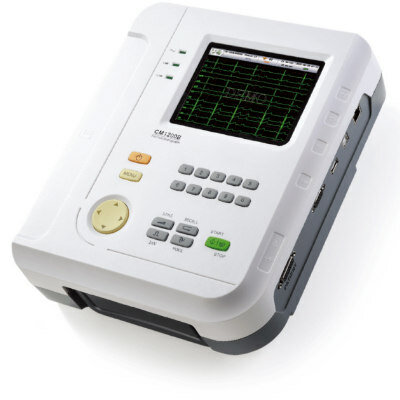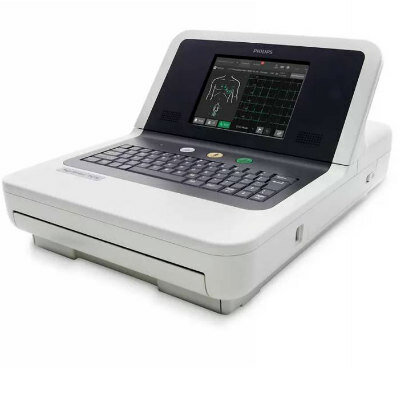Electronic Health Records May Be Key to Improving Patient Care, Study Finds
|
By HospiMedica International staff writers Posted on 21 Sep 2022 |

When a patient gets transferred from a hospital to a nearby specialist or rehabilitation facility, it is often difficult for personnel at the new facility to access the patient’s electronic health records – which includes important patient-specific information such as their medication history and allergies. This lack of electronic compatibility often leads to wasteful and expensive duplication of tests, X-rays and paperwork that can interfere with the treatment of patients. A recent study highlights how the use of electronic health records have resulted in better quality of care – which can direct the next steps of government programs to ensure hospitals use electronic health records in a way that promotes interoperability, or the ability for various health care organizations to quickly access a patient’s records, reduce waste and speed up decision-making to improve patient health outcomes.
So far, the adoption and implementation of electronic health records has been a bumpy road. Electronic health records have widely been cited in research literature as the most cumbersome technology ever implemented in the health care industry. More than USD 30 billion has been invested by the U.S. government in the adoption and use of electronic health records by health care organizations in an attempt to improve the quality of care delivered to patients. In 2011, Centers for Medicare and Medicaid established the “Meaningful Use” program – now known as the “Promoting Interoperability Program” – which offers financial incentives to health care providers who effectively utilize electronic health records in a way that promotes information sharing, public health reporting and interoperability.
Researchers at the University of Missouri (Columbia, MO, USA) analyzed the impact of electronic health records on mortality rates for patients with various medical procedures and conditions. More than five million patients in 300 U.S. hospitals were included in the study, which merged large datasets from the electronic health records, the American Hospital Association and Centers for Medicare and Medicaid. Three main categories emerged: hospitals that meet the “Meaningful Use” requirements with their electronic health records, hospitals that fully implement electronic health records but not in a way that meets the “Meaningful Use” requirements, and hospitals that have either none or only partially implemented electronic health records.
The researchers found that the hospitals that meet the “Meaningful Use” requirements were able to improve quality of care and reduce patient mortality rates to a greater extent than hospitals in the other two groups. While the results show some optimism, the researchers have cautioned that more still needs to be done, including the need to analyze the impact of interoperability and advanced electronic health record functions on quality of care. However, the researchers believe that with the use of data mining and analytics, electronic health records can be better used going forward to potentially identify patient characteristics that put them at higher risks for possible infections or other conditions. The new research can be particularly useful for rural hospitals that historically have less resources and lag behind their urban counterparts in adopting health technology like telehealth and electronic health records. There have been many closures of rural hospitals, an issue that has been worsened by the COVID-19 pandemic, and rural patients tend to have more co-morbidities and worse health outcomes.
“This research highlights the importance of using electronic health records in a way that promotes interoperability to streamline processes, speed up decision-making, reduce wasted time and ultimately improve patient health outcomes,” said Kate Trout, assistant professor in the MU School of Health Professions and lead author on the study. “Ideally, the United States could implement one standardized electronic health records system for everyone to ensure compatibility, so policy makers can hopefully benefit from this research.”
“With this information, are there alerts we can put in after a surgery to ensure we follow up at critical points in time?” Trout added. “Are there certain patient populations that we can use the data to catch them earlier and make sure we give them extra care and not just put them through the same routine protocols as everyone else? That is how we move away from only focusing on implementing the technology and progress toward encouraging innovative ideas that ultimately improve patient health outcomes.”
Related Links:
University of Missouri
Latest Health IT News
- Machine Learning Model Improves Mortality Risk Prediction for Cardiac Surgery Patients
- Strategic Collaboration to Develop and Integrate Generative AI into Healthcare
- AI-Enabled Operating Rooms Solution Helps Hospitals Maximize Utilization and Unlock Capacity
- AI Predicts Pancreatic Cancer Three Years before Diagnosis from Patients’ Medical Records
- First Fully Autonomous Generative AI Personalized Medical Authorizations System Reduces Care Delay
- AI Trained for Specific Vocal Biomarkers Could Accurately Predict Coronary Artery Disease
- First-Ever AI Test for Early Diagnosis of Alzheimer’s to Be Expanded to Diagnosis of Parkinson’s Disease
- New Self-Learning AI-Based Algorithm Reads Electrocardiograms to Spot Unseen Signs of Heart Failure
- Autonomous Robot Performs COVID-19 Nasal Swab Tests

- Statistical Tool Predicts COVID-19 Peaks Worldwide
- Wireless-Controlled Soft Neural Implant Stimulates Brain Cells
- Tiny Polymer Stent Could Treat Pediatric Urethral Strictures
- Human Torso Simulator Helps Design Brace Innovations
- 3D Bioprinting Rebuilds the Human Heart
- Nanodrone Detects Toxic Gases in Hazardous Environments
Channels
Artificial Intelligence
view channel
AI-Powered Algorithm to Revolutionize Detection of Atrial Fibrillation
Atrial fibrillation (AFib), a condition characterized by an irregular and often rapid heart rate, is linked to increased risks of stroke and heart failure. This is because the irregular heartbeat in AFib... Read more
AI Diagnostic Tool Accurately Detects Valvular Disorders Often Missed by Doctors
Doctors generally use stethoscopes to listen for the characteristic lub-dub sounds made by heart valves opening and closing. They also listen for less prominent sounds that indicate problems with these valves.... Read moreCritical Care
view channel
Deep-Learning Model Predicts Arrhythmia 30 Minutes before Onset
Atrial fibrillation, the most common type of cardiac arrhythmia worldwide, affected approximately 59 million people in 2019. Characterized by an irregular and often rapid heart rate, atrial fibrillation... Read more
Breakthrough Technology Combines Detection and Treatment of Nerve-Related Disorders in Single Procedure
The peripheral nervous system (PNS) serves as the communication network that links the brain and spinal cord to every other part of the body. It consists of two parts: the somatic nervous system, which... Read moreSurgical Techniques
view channel
Hydrogel-Based Miniaturized Electric Generators to Power Biomedical Devices
The development of engineered devices that can harvest and convert the mechanical motion of the human body into electricity is essential for powering bioelectronic devices. This mechanoelectrical energy... Read moreWearable Technology Monitors and Analyzes Surgeons' Posture during Long Surgical Procedures
The physical strain associated with the static postures maintained by neurosurgeons during long operations can lead to fatigue and musculoskeletal problems. An objective assessment of surgical ergonomics... Read more.jpg)
Custom 3D-Printed Orthopedic Implants Transform Joint Replacement Surgery
The evolving field of 3D printing is revolutionizing orthopedics, especially for individuals requiring joint replacement surgeries where traditional implants fail to provide a solution. Although most people... Read more
Cutting-Edge Imaging Platform Detects Residual Breast Cancer Missed During Lumpectomy Surgery
Breast cancer is becoming increasingly common, with statistics indicating that 1 in 8 women will develop the disease in their lifetime. Lumpectomy remains the predominant surgical intervention for treating... Read morePatient Care
view channel
Surgical Capacity Optimization Solution Helps Hospitals Boost OR Utilization
An innovative solution has the capability to transform surgical capacity utilization by targeting the root cause of surgical block time inefficiencies. Fujitsu Limited’s (Tokyo, Japan) Surgical Capacity... Read more
Game-Changing Innovation in Surgical Instrument Sterilization Significantly Improves OR Throughput
A groundbreaking innovation enables hospitals to significantly improve instrument processing time and throughput in operating rooms (ORs) and sterile processing departments. Turbett Surgical, Inc.... Read more
Next Gen ICU Bed to Help Address Complex Critical Care Needs
As the critical care environment becomes increasingly demanding and complex due to evolving hospital needs, there is a pressing requirement for innovations that can facilitate patient recovery.... Read moreGroundbreaking AI-Powered UV-C Disinfection Technology Redefines Infection Control Landscape
Healthcare-associated infection (HCAI) is a widespread complication in healthcare management, posing a significant health risk due to its potential to increase patient morbidity and mortality, prolong... Read morePoint of Care
view channel
Critical Bleeding Management System to Help Hospitals Further Standardize Viscoelastic Testing
Surgical procedures are often accompanied by significant blood loss and the subsequent high likelihood of the need for allogeneic blood transfusions. These transfusions, while critical, are linked to various... Read more
Point of Care HIV Test Enables Early Infection Diagnosis for Infants
Early diagnosis and initiation of treatment are crucial for the survival of infants infected with HIV (human immunodeficiency virus). Without treatment, approximately 50% of infants who acquire HIV during... Read more
Whole Blood Rapid Test Aids Assessment of Concussion at Patient's Bedside
In the United States annually, approximately five million individuals seek emergency department care for traumatic brain injuries (TBIs), yet over half of those suspecting a concussion may never get it checked.... Read more
New Generation Glucose Hospital Meter System Ensures Accurate, Interference-Free and Safe Use
A new generation glucose hospital meter system now comes with several features that make hospital glucose testing easier and more secure while continuing to offer accuracy, freedom from interference, and... Read moreBusiness
view channel
Johnson & Johnson Acquires Cardiovascular Medical Device Company Shockwave Medical
Johnson & Johnson (New Brunswick, N.J., USA) and Shockwave Medical (Santa Clara, CA, USA) have entered into a definitive agreement under which Johnson & Johnson will acquire all of Shockwave’s... Read more
















